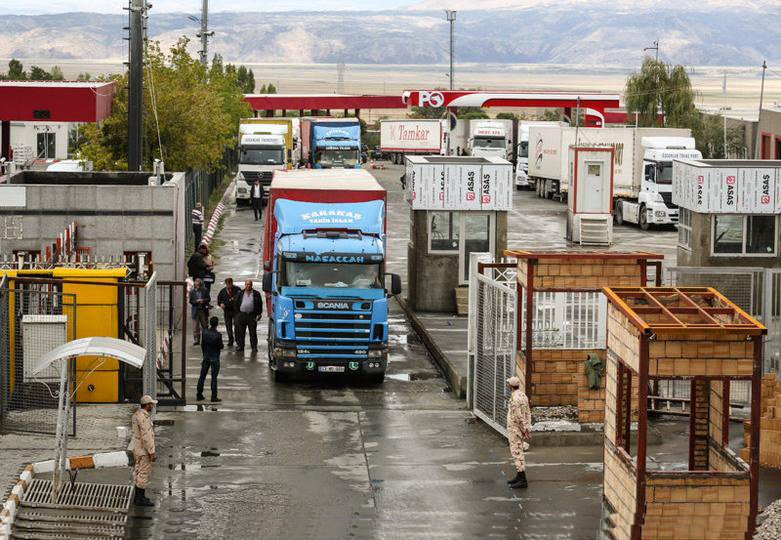Iran, strategically positioned at the intersection of Asia, Europe, and the Middle East, serves as a vital hub for global commerce. Its customs centers play a pivotal role in facilitating trade and transit, ensuring the smooth movement of goods across borders. These centers are not only essential for the export and import of products but also support activities such as sourcing and purchasing goods from Iran, which is increasingly appealing due to the country’s abundant resources and manufacturing capabilities.
Iran’s geographical location, bridging key trade routes, has made it indispensable in regional and international supply chains. The nation’s customs infrastructure supports a wide range of trade activities, from the maritime operations of Shahid Rajaee Port in Bandar Abbas to the air freight managed at Mehrabad and Imam Khomeini Airports. Additionally, its border customs like Bazargan, linking Iran to Europe via Turkey, highlight its role as a conduit for east-west trade corridors.
The robust operations at these customs centers ensure Iran remains competitive in facilitating both regional trade and global supply chains, while their strategic modernization continues to draw attention from businesses seeking efficient sourcing and purchasing channels in the Middle East
Key Customs Centers in Iran
1. Bandar Abbas Customs (Shahid Rajaee Port)
Shahid Rajaee Port, located along the Persian Gulf, stands as Iran’s largest and most vital customs center, forming the backbone of the country’s maritime trade infrastructure. This bustling port manages over 70% of Iran’s container trade, handling an extensive range of goods, from consumer products to industrial equipment. Its strategic location enhances its role as a gateway for imports and exports, connecting Iran to international markets and serving as a vital link in global trade routes.
Equipped with state-of-the-art facilities, Shahid Rajaee Port boasts advanced cargo handling systems, expansive storage capacities, and efficient logistical operations designed to accommodate high trade volumes. These features make it a crucial transit point for goods destined for Central Asia, the Caucasus, and other regional markets. Additionally, the port’s proximity to major shipping lanes and its integration with Iran’s national rail and road networks further amplify its significance, enabling seamless connectivity to inland destinations.
As part of ongoing efforts to modernize and expand, the port has seen significant investments aimed at increasing its capacity and operational efficiency. These developments underline its importance as a hub for international trade, a driver of regional economic growth, and a central point for businesses sourcing and purchasing goods from Iran.

2. Bazargan Customs
Located at the border with Turkey, Bazargan Customs serves as one of the most critical gateways for land-based trade between Iran and Europe. As part of the southern corridor linking China to Europe, this center plays a key role in facilitating international commerce along one of the most dynamic transcontinental trade routes. Over the years, it has become an indispensable part of Iran’s infrastructure for import, export, and transit goods.
Bazargan Customs has undergone significant modernization efforts to streamline operations and boost capacity, ensuring quicker customs clearance and more efficient handling of shipments. These upgrades have been part of broader investments in the corridor aimed at improving connectivity and trade flow between East Asia and Europe. The facility handles a diverse range of goods, including industrial equipment, textiles, consumer products, and agricultural commodities, positioning it as a vital hub for businesses sourcing and purchasing goods from Iran.

3. Mehrabad and Imam Khomeini Customs
The customs offices at Mehrabad and Imam Khomeini Airports are vital hubs for air freight, particularly handling high-value goods such as electronics, pharmaceuticals, luxury items, and perishable products. These airports are strategically located near Tehran, Iran’s capital and economic center, ensuring efficient and rapid distribution to both domestic and international markets.
For foreign investors, these customs centers offer significant advantages. They are equipped with modern infrastructure tailored for the swift processing of air cargo, including cold storage for temperature-sensitive goods and secure facilities for valuable shipments. These capabilities make them ideal for businesses requiring expedited delivery, precision logistics, and reliable customs procedures.
Mehrabad Airport primarily focuses on domestic flights and freight, making it essential for goods that need immediate distribution within Iran. On the other hand, Imam Khomeini Airport serves as the country’s largest international gateway, connecting Iran to major global destinations. This dual capacity allows for seamless integration of domestic and international supply chains, offering foreign investors a robust platform to support their operations in the region.

4. Chabahar Customs
Chabahar, located in southeastern Iran, is a vital customs center and one of the country’s most strategically important ports. Positioned on the Indian Ocean outside the congested Strait of Hormuz, Chabahar serves as a gateway for international trade and a bridge connecting Iran with South and Central Asia. This unique location offers foreign investors unparalleled access to emerging markets while bypassing more congested maritime routes, providing a competitive edge in logistics and cost efficiency.
As part of a designated free trade zone, Chabahar Customs benefits from tax incentives, streamlined regulatory processes, and duty exemptions designed to attract foreign investment. These features create an investor-friendly environment, reducing operational costs and improving the ease of doing business. The port’s customs facilities are optimized for handling diverse cargo, including bulk goods, containers, and specialized shipments such as industrial machinery and agricultural products. For foreign investors, Chabahar’s long-term development plans are particularly appealing. Significant investments are being made to expand its infrastructure, including modernizing port facilities, enhancing cargo handling capabilities, and integrating road and rail links with regional networks.

Streamlined Customs Processes for Exporting Iran’s Handwoven Carpets
For foreign investors looking to engage in the export or import of Iran’s renowned handwoven carpets, the country’s specialized customs centers provide essential support in the clearance process. Iran’s best customs for handwoven carpet clearance are located in key commercial hubs like Tehran and Isfahan, where experienced officials ensure the efficient handling of these high-value goods. The customs procedures are tailored to the unique characteristics of these carpets, which often involve detailed inspections to verify authenticity, quality, and origin, as well as compliance with international trade regulations.
These centers offer streamlined processes for carpet exporters, ensuring minimal delays and facilitating smoother transactions. Additionally, Iran’s growing emphasis on modernizing its customs infrastructure and digitalizing clearance processes has made it easier for foreign businesses to engage with the country’s thriving carpet industry. For investors, the customs authorities are supportive in providing the necessary documentation and assistance for smooth export operations, offering a distinct advantage in accessing global markets for Iranian handwoven carpets.
Diooni company; Leading the Way in Goods Clearance in Iran
Diooni is a specialized company in Iran, recognized for its expertise in the field of goods clearance and logistics. With a strong reputation in managing customs procedures, Diooni streamlines the import and export process for businesses looking to navigate the complexities of Iranian trade regulations. The company offers a comprehensive range of services, including customs clearance, documentation, and logistical support, which helps ensure that goods move efficiently across borders, whether for local distribution or international trade.
Diooni’s team is highly skilled in handling diverse product categories, including high-value and sensitive goods such as textiles, and handwoven carpets, making them an ideal partner for foreign investors and exporters. By staying up-to-date with the latest regulations and leveraging its deep knowledge of the Iranian customs system, Diooni reduces delays and minimizes costs associated with clearing goods through Iranian ports and customs offices. For businesses looking to expand into the Iranian market or source products from Iran, Diooni’s services provide reliable support for seamless trade operations.
A short list of the rest of Iran’s customs centers:
- Aras Free Trade Zone: Located at the border with Azerbaijan, this zone serves as a transit hub for goods moving between Iran and its neighboring countries, benefiting from tax exemptions and streamlined customs procedures for imported and exported goods.
- Khosravi Customs: Situated at the border with Iraq, Khosravi is another essential land crossing that facilitates goods movement, especially for Iranian exports heading to Iraq.
- Astara Customs: A critical point for trade with Azerbaijan and the Caspian Sea region, Astara is important for land-based logistics and the distribution of goods within the Caucasus region.
- Bandar Abbas Customs: Located near the port city of Bandar Abbas, this customs center manages significant volumes of cargo, especially for goods entering Iran through the Strait of Hormuz.
- Mashhad Customs: As a key land customs office in northeastern Iran, Mashhad handles goods flowing from Afghanistan and Turkmenistan, serving as a critical transit point in the region.

